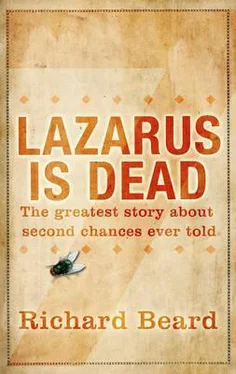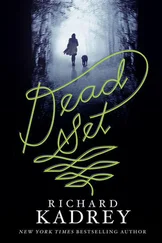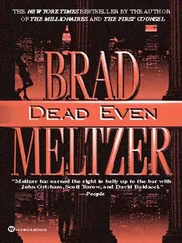For Saramago, it is unthinkable that Joseph should save himself and his family at the expense of his neighbours’ children. Joseph’s moral cowardice benights his life from this point onward. He will not recover from the guilt of failing to alert the others, and is never again at peace.
Saramago is a communist atheist: he underestimates the human capacity for compromise. Joseph would have wanted to save every child in Bethlehem. Of course he would. He knew the slaughter was coming. Saramago correctly identifies the immorality of not saving even one other child, and remember that Joseph was close to perfect — he was the husband of the mother of god. If he couldn’t save every stranger, he could at least save a friend.
In Bethany Lazarus has invested in a double-chambered tomb, one of several in a long row cut into a low escarpment outside the village. This is where the richer inhabitants of Bethany go when they die. On the open land facing the entrances Faruq has penned his Passover lambs, because as a tomb-owner Lazarus has grazing rights. On this particular morning his resourcefulness fails to please him as it should.
His left eye hurts, and a chorus of out-of-town women are bewailing Absalom’s mother, buried the day before yesterday. Lazarus has paid his respects. He said more than once that she was a lovely old lady, and donated generously for the three-day wail. Which is now tuned perfectly to scrape against the pain in the left front side of his head.
Absalom thanks each of the mourners individually, on behalf of his mother. He hands out more coins, as if the wailing should never cease.
Lazarus assesses Faruq’s lambs. The air above them hazes with ticks, and their skittish orange eyes shine brightly. The Jerusalem priests will reject any animal with blemishes, a cut foreleg or a snout grazed in a fall. By themselves, the sheep tend to get stuck in gullies or eaten by wolves, which is why Lazarus chooses not to abandon them to god’s mercy. He prefers to think ahead, to shape the future until it fits him best. He distrusts the hand of god, and employs experienced shepherds, desert Bedouin like Faruq.
Knee-deep in the flock, Lazarus picks out a trembling lamb, lifts it to his chest where the tiny heart flutters just above his own. He closes his eyes and crushes his nose against the dark velvet of the animal’s head. Someone ought to save it.
The lamb has an eye infection. Lazarus drops it back in the pen.
Physically, the information we have about Lazarus comes mostly from the moment he emerges from his tomb, four days after his death. I can therefore say with confidence that today, on the morning after the first miracle performed by Jesus at the wedding in Cana, as Lazarus sets out for Jerusalem with Absalom and a couple of selected lambs, he is probably clean-shaven.
In any biography, which is an attempt to bring someone back to life, the facts will generate patterns of evidence. There is a coherence to the visual memory of Lazarus: in the portrayals that survive, mostly paintings made between 1300 and the end of the eighteenth century, Lazarus is consistently free of facial hair.
For a representative image, look to the Spanish painter Juan de Flandes. In The Raising of Lazarus (1560), we see a well-made man (clean-shaven) in his early thirties with short hair greying at the temples. He has shocked eyes in a face drawn tight after four days entombed in a cave, but the point is that before he died he was already different. He shaves. He does not resemble the massed ranks of heavy, bearded men who watch him rise from the dead.
This attention to detail is respected throughout the pictorial record — it remains artistically true because it is true. From Giotto in 1304 to Rembrandt in 1630, Lazarus is clean-shaven. Van Gogh (1891) gives him a wispy ginger beard, but only because he sees himself as Lazarus, and Lazarus as him, as followers everywhere do for whichever Christ they choose.
Can we be more precise? Bethany is an outlying village, and Lazarus is fit from regular trips into Jerusalem, with firm buttocks from the uphill tramp back home. He has a watchful look in his eyes. He never forgets that he’s a Nazarene despite his thirteen years in the south.
And his age: he is thirty-two years old, the same age as Jesus, a man in his physical prime.
In the darkest hour of the night, Joseph the father of Jesus barges into his best friend’s house, and hurries both families out to a waiting cart. He has an assertiveness about him, an absolute seriousness with which there is no arguing.
‘I haven’t got time to explain.’
They must have been friends for Eliakim to trust him. Joseph and Eliakim are Bethlehem neighbours, workmates who travel daily to the Temple building site, and both from the line of David. Eliakim the father of Lazarus wouldn’t have bundled his family into the darkness for just anyone.
Eliakim’s wife Sarah is pregnant again, and in the cart she bumps and shudders over the desert stones along with the toddlers, Jesus and Lazarus. The older girls Martha and Mary sometimes walk and sometimes ride, but Joseph and Eliakim trudge forever at either end of the cart, their emigrant convoy propelled by hope ahead and disaster behind.
On the first day, or perhaps the second, the news of the massacre in Bethlehem overtakes them. Joseph doesn’t know what to say.
‘The children. They are very special.’
‘I know that.’ Eliakim understands instantly that they can’t go back. ‘Every child is special.’
‘The boys needed saving. Our boys.’
‘How did you know the soldiers were coming?’
Joseph remembers the angel from his unbelievable dream.
‘I overheard some talk at the Temple.’
Neither man stops walking.
‘Thanks,’ Eliakim says, eventually. ‘For everything.’
‘That’s what friends are for.’
5
All the sources suggest that Lazarus was rich. By the time information begins to resurface in thirteenth-century Spain, in the Legenda Sanctorum , or Golden Legend, of 1260, Lazarus and his sisters live in separate opulent castles each with a view over Jerusalem.
Not true (archaeologists have uncovered no remains of castles directly outside the city), but even in John’s pinched account there is convincing evidence of money. Lazarus owns an expensive tomb, with two separate chambers and a sliding door. As a dead man he is wrapped in linen, the finest textile available for shrouds. There is at least one bottle of three-hundred-shekel perfume in his house, later used by Mary to wash the feet of Jesus.
This ability to generate wealth supports the view that Lazarus has connections with the Jerusalem Temple. And the village of Bethany, between the desert and the city, is perfectly placed to satisfy the Temple’s demand for sacrificial lambs.
The numbers are astonishing. Each and every synagogue will expect to slaughter a thousand lambs a year. At new moons and the seven annual festivals, sinners make additional offerings of repentance. Many of these supplicants are the ill and sick whose prayers for forgiveness are the same as prayers for health — killing a sheep is ancient medicine.
The rock-cut tomb, the expensive perfume, the shroud: Lazarus is an overseer. He makes a healthy living from underpaying the shepherds and overcharging the priests, an expert at the feints necessary to realise a profit, to get more for less, or something for nothing.
His ambition to get on in the world may, possibly, have inhibited his spiritual growth, but he doesn’t care. Not caring gives him charisma, a self-reliance the Temple priests have learned to trust. He is weak on god, but gets things done. He’s an individualist before his time, a fact as biographically persuasive as his shaven face. Raised in small-town Nazareth, as a young man he moved the length of the country to live and work within walking distance of Jerusalem. He is enterprising and economically mobile. He is not like anyone else.
Читать дальше












